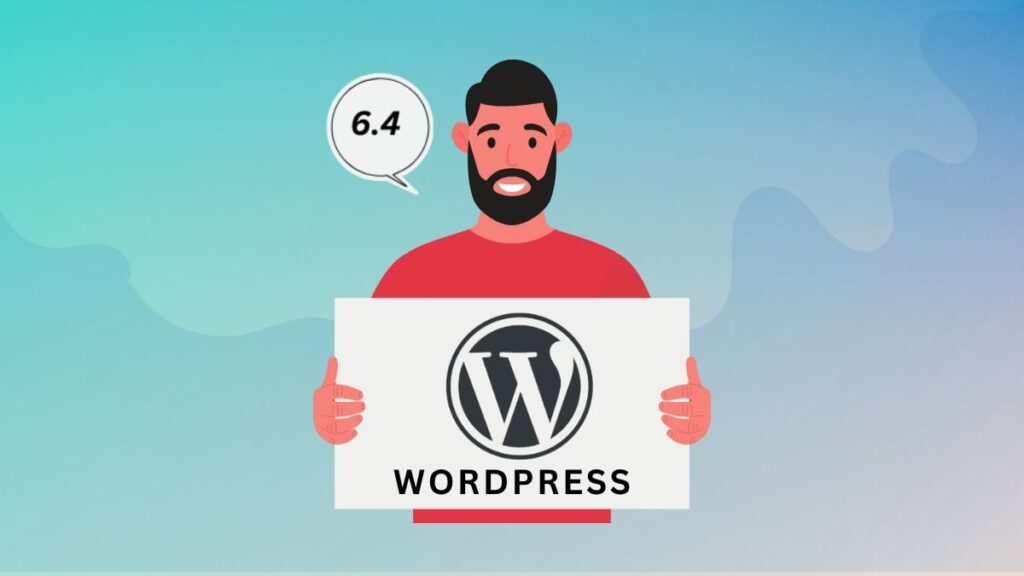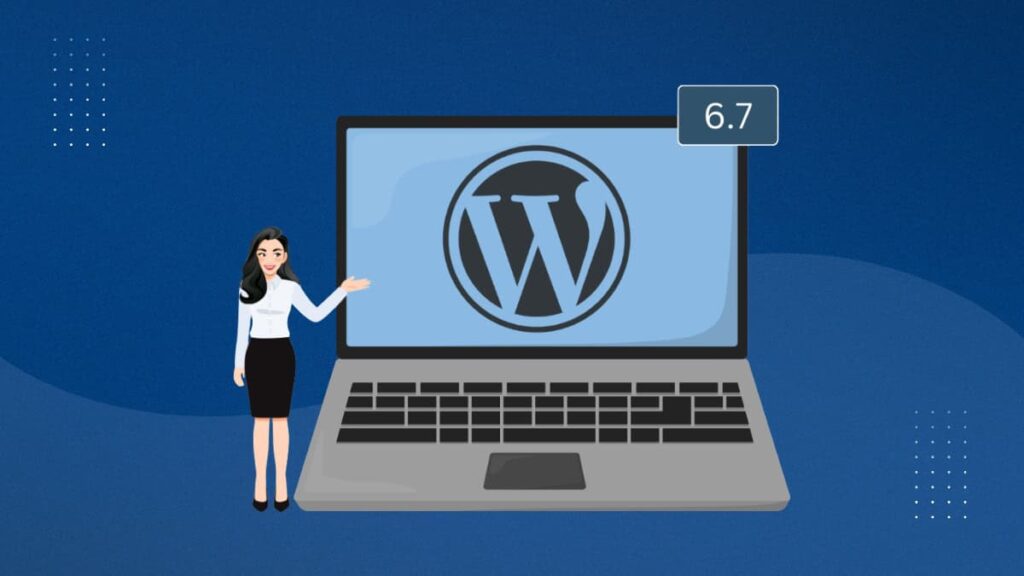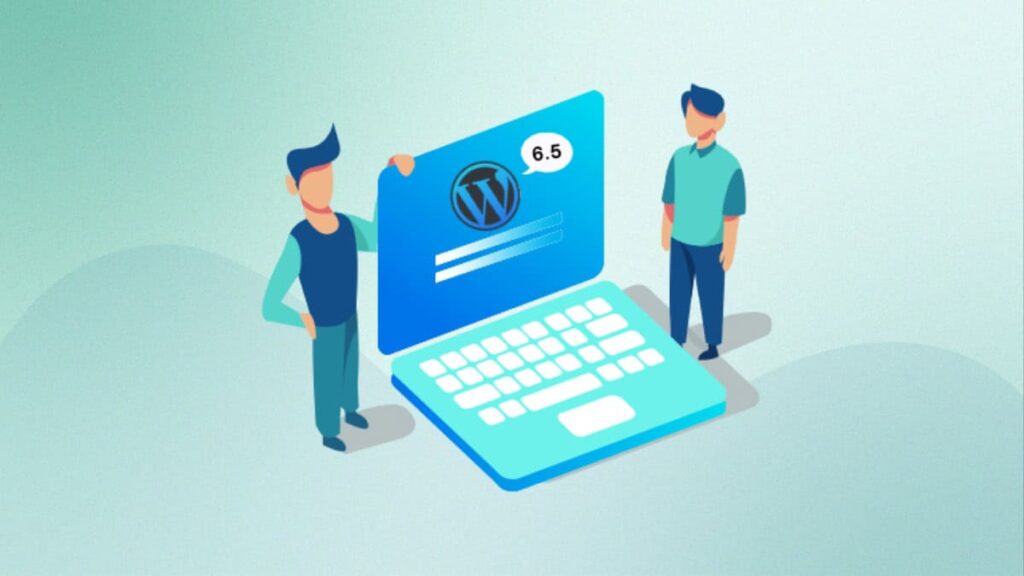WordPress fans and website owners are eagerly awaiting the release of WordPress 6.4. It’s in the RC version and will officially launch on November 7, 2023. This update is the third big one this year, and it brings lots of cool new stuff to make creating and managing websites even better. We’ve closely monitored its progress and tested all the new features on our test sites.
In this article, we’ll dive into what’s coming in WordPress 6.4. You’ll see all the neat new things and improvements that will make using WordPress a lot more fun for everyone. So get ready to find out the updates for you in this exciting new version of WordPress!
Twenty Twenty-Four Default Block Theme
Every year, WordPress introduces a fresh default theme with its final release of the year. In WordPress 6.4, this new default theme will be called “Twenty Twenty-Four.”
Like the previous default theme, Twenty Twenty-Three, the new theme follows a simple and clean design right from the start. However, Twenty Twenty-Four is expected to bring some exciting changes. It’s intended to use new design tools and unique style variations to make websites look better and more accessible to customize.
It is not like the usual blog themes. It’s great for businesses, agencies, and portfolios. This theme is very flexible, and it comes with different patterns like portfolio, team, banner, and testimonial.
When you first use this theme, the homepage looks like a professional company website. It shows what the business is about, its services, and a button to subscribe. It’s great for people new to creating content because it has lots of placeholder text to help you get started easily. So, if you’re looking to make a website for your company or portfolio, Twenty Twenty-Four is a good choice.
So, in WordPress 6.4, look for the Twenty Twenty-Four default theme, which offers website creators more design options and flexibility.
Make Images Bigger with a Lightbox Popup
In WordPress 6.4, there’s an exciting addition called the Image Lightbox feature that makes your image viewing experience much better. They realized the interface needed simpler, so they created a unique Settings panel just for the image block. You’ll find an option named “Expand On Click” to turn on the Lightbox feature available for both Global Styles and Block settings.
Here’s the cool part: The Lightbox feature works with image blocks. So, when you’re reading a page and come across an image, you can click on it, and it will pop up in a larger size on top of the rest of the content.
Add Aspect Ratio to Image Block
In the previous WordPress version 6.3, they added a helpful feature for the Featured Image block that allowed you to control the aspect ratio. It is handy because it lets you choose how the image appears regarding its width and height.
Now, they’ve taken this feature and extended it to the placeholder of the Image block. The placeholder is like a spot where you’ll later put your image. So, with this extension, you can also control the aspect ratio of the image you will add there.
This is helpful when you’re creating patterns, especially wireframe-style ones. These are like layouts that you set up for users to add their content. So, you can define how images will fit in these layouts with the correct width and height.
Add Background Image to Group Block
Now, it’s simpler to organize your content! There’s a new feature that lets you change names to groups of blocks. This makes it easier to arrange your content neatly, as we explained in the article above.
And that’s not all! Another exciting addition is the ability to add background images to Group blocks. It means you can now choose a picture or color to put in the background of a content group. It’s like giving a unique look to a specific section of your page. This creativity and customization option makes your page look even better and more appealing.
In WordPress version 6.4, you can now organize patterns into categories, and you can also import and export these patterns using JSON files.
Create Your Own Pattern Category
When you create design patterns in WordPress, you can organize them into categories. These categories make it easier to manage and find your patterns. You can also edit these categories while working on a pattern.
To make sure this feature works well, follow these steps: First, create various user patterns, whether they are synced or unsynced, and assign categories to them (remember to press ‘enter’ or add a ‘,’ after each category).
Then, go to the site editor’s patterns page and check if the categories appear in the left navigation panel. When you select a category, it shows you the synced patterns, and the async patterns still appear as they should. Also, check if you can find all your patterns under ‘All Patterns’ and if the search function works smoothly.
Lastly, try duplicating a theme pattern and see if the new one has the same category. Additionally, when you add a user pattern with the ‘Footer’ category, ensure it appears alongside the theme Footer patterns, considering the category name difference (theme patterns use ‘footer’ while the user category name should match this).
All patterns, whether shared or only on your site, are now listed in one place to simplify things. You don’t have to switch between different tabs to find them; they’re all together in one section.
Import/Export Patterns as JSON files
You can now import and export these patterns as JSON files, a simple way to move your custom patterns from one website to another. This makes it handy if you want to use the same designs or content on multiple sites.
This feature is designed to maintain compatibility with Reusable blocks, making working with patterns across different WordPress websites more convenient. So you can quickly transfer your custom patterns and keep your designs consistent.
Let’s talk about the enhancements and improvements that have been added to WordPress version 6.4. This update brings several new features and enhancements to make your WordPress experience even better.
Global Styles Revision
This update has a useful feature that makes it easy to reset global styles back to their original settings. It means if you’ve changed how things look on your website and you want to go back to how they were when you first started, it’s now a breeze.
Here’s how it works: First, make a few changes to the global style on your website. After that, open up the “revision panel.” It is like a history of all the changes you’ve made. You’ll find a button at the bottom of this panel that says “Reset to Default.” Click on that, and your styles will return to how they were when you started.
It is a significant improvement because, in the past, you had to save two different versions of your styles before you could even use the revision panel. Now, you can make changes and reset them with just one revision check, which is much more convenient.
Improves Open in New Tab Feature in Link Previews
In the last WordPress update, they moved the “Open in new tab” option to the Advanced settings in the link preview control popup.
This means users must click a few more times to open a link in a new tab.
In WordPress 6.4, they’ve made it simpler. They added a checkbox in the link preview window so you can easily choose to open a link in a new tab.
Improvements in List View
The List View in WordPress has been improved to make it easier to manage your content. It’s now more user-friendly and straightforward to use. Here are the key changes in List View.
Rename Group Block
In List View, there’s a new feature! You can give a different name to your Group blocks. It is helpful because it lets you know what each group block is for, making your layouts easier to understand when you look at them.
You have two ways to change the name of your group block. The first method is to do it right from the List View Outline. Alternatively, you can rename it by clicking on the three dots under the Group block’s toolbar.
Gallery and Image Blocks
When working on your website, you can get a sneak peek of your images and gallery blocks without opening each one. In the past, all you could see was the word “Image,” and you had to click it to figure out which image it was.
But now, it’s much simpler and more informative. You can preview the images right there, saving time and making the tool much more convenient. This enhancement makes managing your website much more efficient and enjoyable!
Duplicating Block
In older versions of WordPress, if you wanted to duplicate multiple blocks in the site editor by using keyboard shortcuts (Shift + Cmd + D) in a list view, this would open the bookmark tab instead of duplicating the blocks.
However, in the latest version, WordPress 6.4, they’ve improved this process. Now, when you duplicate multiple blocks in the list view, you can use the same keyboard shortcut, and it will duplicate the blocks for you quickly and easily. This change makes it simpler and more efficient to duplicate and work with blocks in WordPress.
Here’s a key point: Add a footnote to a paragraph block in your post or page. If you try to select several blocks that include a Footnotes block, like a Paragraph and a Footnotes block simultaneously, and then press CMD + Shift + D, nothing will happen.
You can only have one Footnotes block in a post or page. So, WordPress won’t let you make duplicates of the Footnotes block because it’s limited to one per post or page.
Easily Deselected the Block
In the List View, if you have selected some blocks and want to unselect them, you can now press the “escape” key. This new addition makes organizing and editing your content in WordPress much easier. It’s like a handy tool for managing your blocks and content smoothly.
Command Palette Enhancement
In WordPress 6.3, a feature called the Command Palette was introduced, enabling users to execute commands by simply hitting Cmd + K on their keyboards.
Now, in WordPress 6.4, this tool is getting even better. It’s not just a functional upgrade; there’s also a subtitle design enhancement. The elements within the Command Palette are now slightly darker, providing a more visually appealing experience.
Moreover, new keyboard shortcuts are being added, making it even easier and faster to navigate and manage your WordPress site. These shortcuts will further streamline your workflow and save you valuable time.
Secondly, It brings a range of fresh commands and actions that specifically enhance block management. Within the Command Palette, you’ll find the ability to duplicate, transform, delete, and insert blocks, all with ease.
If you have multiple blocks to handle, you can now easily select them and apply transformations using this tool.
For instance, if you wish to change many blocks simultaneously, you can select them and apply transformations using the Command Palette.
If you happen to be using WordPress on a smaller screen, such as a mobile phone, here’s some good news for you in WordPress 6.4. The Command Palette has been optimized to function more effectively on these compact screens.
This means that if you’re editing your WordPress site on your mobile device, you’ll find the Command Palette to be significantly more user-friendly. Its design and functionality have been adjusted to fit the limited screen space, making it easier to access and utilize its features without hassle.
In WordPress 6.4, the Command Palette has been fine-tuned for an even more user-friendly experience.
For example, when you open the code editor within your page or post, you’ll notice that it suggests “Exit Code Editor” in a more advanced and intuitive manner. This consistent and clear language not only guides you effectively but also ensures that actions align with what you’d naturally expect, enhancing your overall usability.
List Block Enhancement
In the List Block of WordPress, there’s a handy new feature. Instead of having separate lists one after the other, you can now merge them together into one big list. This is like combining to-do lists into a single, organized checklist.
This feature makes your editing experience smoother and more efficient. When you’re working on content and have several lists in a row, this feature helps you manage and format them easily. It’s all about keeping your content neat and making your job as an editor or creator simpler.
Navigation Block Enhancement
You can now choose a default style for the core navigation links in the navigation block. It is great because it gives you more freedom to personalize and style your website’s menu. You can make your menu look just the way you want it to.
Imagine your website’s menu is like a book’s table of contents – it helps visitors navigate and find what they’re looking for. Now, with this update, you can design how the links in that menu look. You can pick the font style, making it bold, italic, or any way you like. It’s like choosing the font for a book’s chapter titles but for your website’s menu.
Enhancement in Query Loop Block Pagination
It is an excellent new feature that enhances the experience of navigating between pages within a Query Loop block. You’ll be pleased that you no longer need to refresh the page whenever you switch between pages. To use this feature, just turn on the “Force Page Reload” feature in the Query Loop Block Settings.
It enables you to transition between pages smoothly, improving your browsing experience. The best part is you can choose when to activate or deactivate this feature, giving you greater control over your interactions with WordPress.
Furthermore, you can take charge of how many pages are displayed using the Query Page Numbers block, adding another layer of customization. This feature empowers you to manage your content more efficiently, making WordPress 6.4 a user-friendly and flexible platform for your website needs.
Wrap Up
In conclusion, the WordPress 6.4 update brings many exciting changes. It offers a new default theme, simplifies design with categories for patterns, and improves the user experience with features like block naming and list merging. These updates make website creation and management easier and more enjoyable. So, get ready to explore and enjoy the new features of WordPress 6.4.



